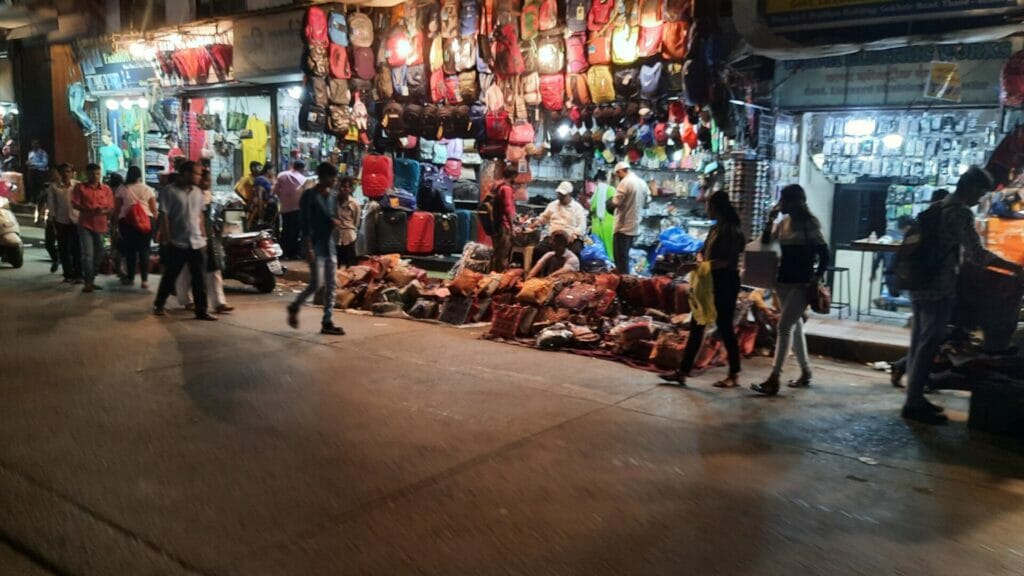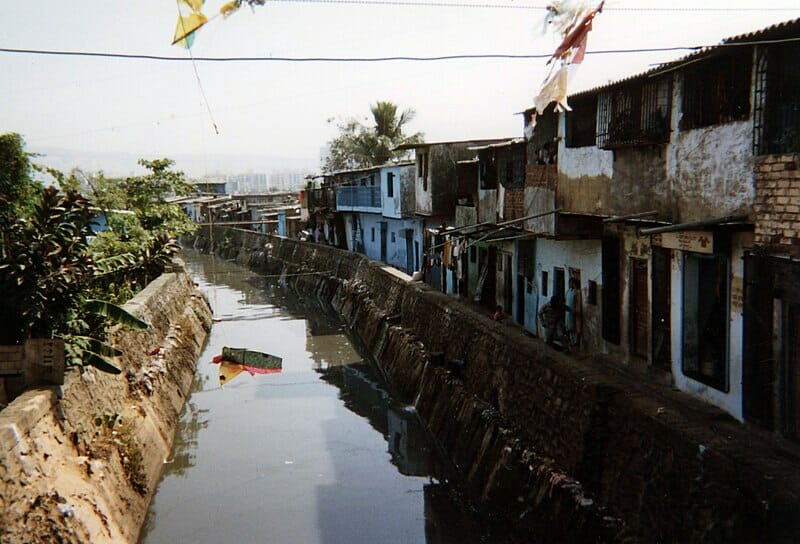Unlike regular news coverage where multiple stakeholders are consulted for their opinion on civic issues, articles from citizen journalists offer readers the perspective and personal insight from a fellow citizen. The latter’s social background, their work, experiences, with the right questions and direction, are reflected in their arguments.
Engaging with three such citizen journalists was also a revealing experience for me. One of them is the president of a street vendor union, second a member of an anganwadi workers’ union and, lastly, a young boy living in a slum in Kranti Nagar, Kandivali. All either come from working class backgrounds or are involved in organising them. Their work throws light on how the masses experience the city.
Mumbai, through the lens of its citizen journalists
Working with them helped me reflect on the existing state of affairs – how Mumbai is split into two worlds. One with regular water supply, closed and functional drains and access to transport, and another world where unemployment, eviction and everyday existential questions of livelihood make life miserable and stressful.
Mumbai is unplanned, chaotic, competitive and fraught with many challenges for the people to get through the day. Every problem is connected. Listening to their stories, however, gave me hope because all of them expressed their active interest in finding solutions. Their stories also brought many aspects of the city together like water supply, waste management, street vending, public health, governance, transport.
Read more: NFHS-5 shows progress for sanitation in Mumbai, but do ground realities bear this out?
Tales of resistance
I met Syed Haider Ali Imam, who is the president of a street vendors union, and Chetna Surve, who is a member of an anganwadi workers’ union, with a specific set of questions hoping to cover a lot of issues, but they shared so much more than what I thought the articles would cover. Syed knew the whole legal history of the case like the back of his hand, churning out date after date while recounting his experience.
His passion and conviction throughout the struggle for the recognition of street vendors and the difficulties they face was striking. It made me think of the terms we often see used in relation with street vending: “encroachments”, “taking over”, “unhygienic” etc. They evoke a sense of apathy towards street vendors. Most of them are migrants who live in cramped spaces, many unable to earn enough to live a comfortable life.
Imam’s account of the way street vendors are treated by the government and some citizen groups is a reflection of how the workers are ‘other-ed’ and blamed for ‘dirtying’ the city. Are street vendors occupying the narrow roads and causing inconvenience to citizens. or is it the negligence of the authorities in designing cities that is at the root of such problems?

If street vendors disappear and residents cannot buy vegetables and fast food near railway stations, how will those who don’t depend on delivery apps for food survive? How will they take time out of their hectic 12-hour workday to shop for essential items and go to the local market? It might also cause a rise in prices with many workers at the mercy of the market to decide their fate and move into gig work for app-based deliveries.
Anganwadi workers the backbone of public health
Chetna is an anganwadi worker whose account of the efforts of all anganwadi workers to ensure health of the community was a great opportunity to understand the public health ecosystem from the ground. She, like many other workers, could have chosen to only earn money, care for her family’s well-being and move out of anganwadi work. But she is passionate about bettering the world and ensuring young children become healthy and happy adults, for which she even spends out of her own pocket, with limited means, to ensure that the children she is assigned are taken care of.
Her story is evidence that our society is not built on competition and selfishness, but on cooperation and mutual support. That there is hope to build a world where our public health system is strong enough to reach out to each and every person in the community, with a strong base of social workers who do continuous work for the people. If done in a disciplined and committed manner, we can ensure no child in the country sleeps hungry and all children receive nutrition and care.
“It takes a village to raise a child,” said Chetna, as I helped Chetna write her story. Raising children is not the task of parents alone, it is the responsibility of an entire society.
Anganwadi workers who do this job must be enumerated, paid living wages that enable one to live a comfortable life, and recognised. They are workers and not volunteers, is something she kept repeating, which means that their work should be compensated with a fixed salary and social security benefits, not an honorarium.
A citizen journalist’s account of hope from Kranti Nagar
From Kranti Nagar, we heard Sagar’s story, a bright young boy who is full of questions and suggestions. His detailed report on the monsoon and the wrath the Mumbai rains unleashed on his settlement is a sad reflection of how the city’s slums disproportionately suffer due to climate disasters.

Year after year the houses get wrecked and his area becomes infested with waste, vermin and disease. The neglect of the slums in the city is apparent as his tale is not unlike that of many others who live like him. His inputs about his neighbourhood and the need for bettering it is testament to the fact that it is his voice and that of others like him that will make a change.
Read more: People in this Mumbai slum barely make it to 40; here’s why
Citizen journalists are truly voices from the ground who give readers a deeper and richer description of the state of affairs in a city. The passion with which the citizen journalists write also spurred me to think deeply about the issues that affect us. Their work presents readers with varied perspectives which would otherwise have been lost in a sea of information that floods our screens every day. Reading and working with them allowed me to be a part of their journey and filled me with immense hope that we can come together to work for building a world that is truly sustainable and equitable.
These archives with their testimonials help readers also see how every issue we face is connected and why we need to look at all issues in totality. Our city is brimming with stories and we hope that more of you will work with us and take your stories about the city and all its joys, sorrows, sights, fights and smells to our readers.
Looking forward to a 2023 filled with hope and strength!